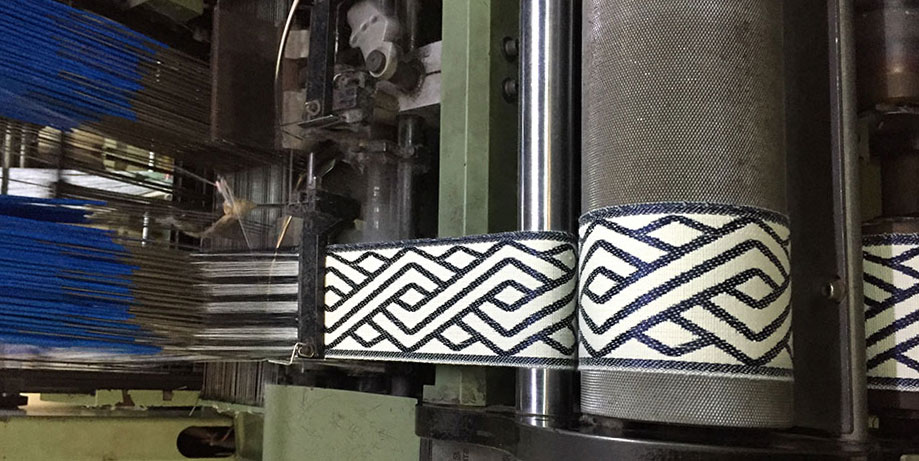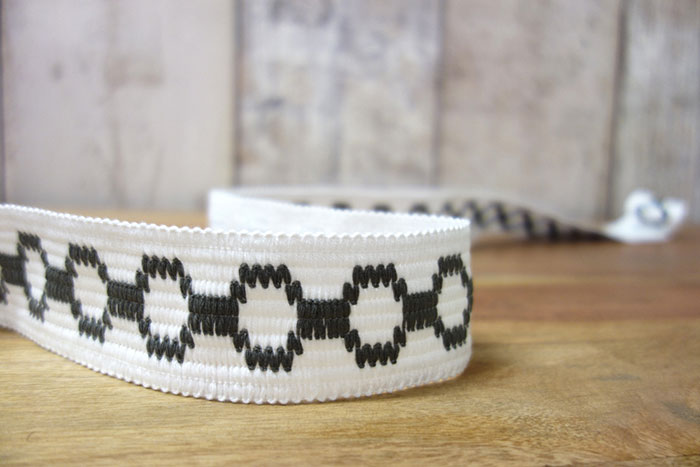Ask Chrissie: Chrissie Takes Us Inside the Wonderful World of Trims
Date Posted:29 October 2019
In this post, Tina chats to Chrissie about trims, their history and the process for designing trims for the Australian market.
In the smart No Chintz upholstery fabric store are shelves stacked with tassels and trims. Within an elegant glass cabinet, atop side tables and in the front window are examples of how these decorative lengths can be used to trim cushions and lampshades, Roman blinds and curtain edges.
Wanting to find out more, I knocked on Chrissie’s studio door.
TGB: Hello Chrissie! Your beautiful trims are bursting out of their shelves! Can you give me some history?
Chrissie: Hi Tina! Well, most tassels and trims originated as decoration for clothing – passement is the French word for lace; the Guild was established in the 16th Century.
Trims are expensive and complicated to make and a beautiful long lasting trim needs to be made in a particular way that is quite labour intensive.
Trims first appeared as a lace or a cord in France. The cords would have been used to tie on clothing like around the waist, and it evolved further into decorative ends for further enhancement, becoming tassels and pompoms.
Lace-making similarly was applied onto clothing for the gentry. The wealthy would use gold for lace making.
The army and other uniformed groups, as well as the church used braiding and tasselling on their garments.
Today, most passementre businesses are run primarily in India and Turkey and a smaller number in Vietnam.
TGB: How are some of these decorations made?
Chrissie: Trims are made on narrow looms, braid looms, machine looms and lace looms and aspects of decorative elements are hand applied, embellishments such as shells, beads and tassels sewn on, hand attached, or embroidered.

TGB: When did you introduce braids and trims along with fabrics at your stores?
Chrissie: The first time I got into trims and braids, a group of Muslim women were making them for me. That collective fell apart, and I had to search further afield. Later on at a trade fair in Delhi, I saw some great tassels and there was a very nice man at this booth from a scrap metal family.
They had been called out to a factory to scrap these beautiful European machines, which were no longer in use.
This man immediately recognized a good opportunity.
He decided that instead of turning them into scrap metal, he would try his hand at using the machines for what they were designed for, which is to make passementre!
It was at a time that other countries were overtaking India in scrap metal exports, and he thought this would be a good time to diversify.
TGB: Talk about going into a completely different direction!
Chrissie: Yes! He bought some land outside of Delhi, and installed the machinery, and started a whole new business.
There were a few old timers left at the factory who were able to share their expertise that got him up and running.

TGB: How did your manufacturer know what to design for the western market especially being new to this industry?
Chrissie: A few people like me came along and could immediately recognize the quality. The braids were very well made and people like me gave him useful feedback. It all improved and grew over time.
I would show them what I wanted from old samples and drawings and with some back and forth, they eventually got the hang of what we were looking for.
TGB: Is it a challenge designing trims?
Chrissie: Designing trims are harder than textiles. You are of course constrained by the looms, which restrict the size of the trim. Persistence is everything- you might get a message saying: ‘that’s too thick’, for instance.
You can either just accept that, or delve a little deeper, and ask if a thinner yarn can achieve what you need. Patience can overcome what the manufacturers throw out as ‘problems’.
As my particular braid makers come from a scrap metal industry, there is no creativity there and so everything has to be spelled out.
The men I deal with are of few words, but we’ve struck an understanding and I really admire them.
-web.jpg)
TGB: I’m guessing that the making of braids and trims is a very small industry?
Chrissie: It is! In Britain and France, there is a very small group of high end manufacturers who make their wares by hand. The output is very small and as you can imagine the prices do match that production. The Turks and the Indians are at the top of the game. These varieties are much more affordable as the production levels are higher and the product is machine made. Also on the scene are the Vietnamese who are making for France and doing beautiful work.
Labour costs are lower in third world countries, which is why this industry has pretty much died out in Europe and North America.
So for me, it’s pretty crucial when I make a connection with a manufacturer like this that I go on the floor and amongst the workers and check out the working conditions.
I will not support manufacturers who misuse their labour force.
TGB: How does a potential client approach trims?
Chrissie: Look, it is good to understand it’s purpose. A trim functions to break the edge and add a tailored line. It contains the fabric and adds a nice finish to the product.
Flat braids are fashionable at the moment.
Braids are stitched on. The varieties at No Chintz are endless: from the Carnival braid, which unleashes into a ruffle, to a picot braid in different thicknesses.
When a client comes in to discuss their decorating needs, we always show them various ways of trimming, binding and edging their furnishings.
I usually start with a flat braid. They are beautiful, simple and elegant. It is an easy introduction.
We try and keep our range quite clean, not fussy. Not too shiny. They seem to appeal to Australians the most.
TGB: Thank you Chrissie! Another informative session with you! It is so good to know more about the history of furnishings, which give our homes comfort and pleasure.
No Chintz Trims and Braids are available In Store and Online
Chrissie Jeffrey was chatting with Tina Gomes Brand

Tina Gomes Brand is a freelance writer who searches out all things creative from food and architecture to travel, fashion and interiors.
Brand writes from a broad experience of interacting with various cultures and collaborating with creative people everywhere.






































